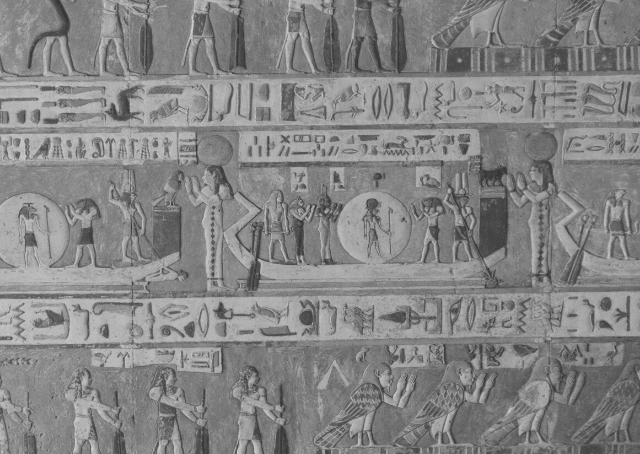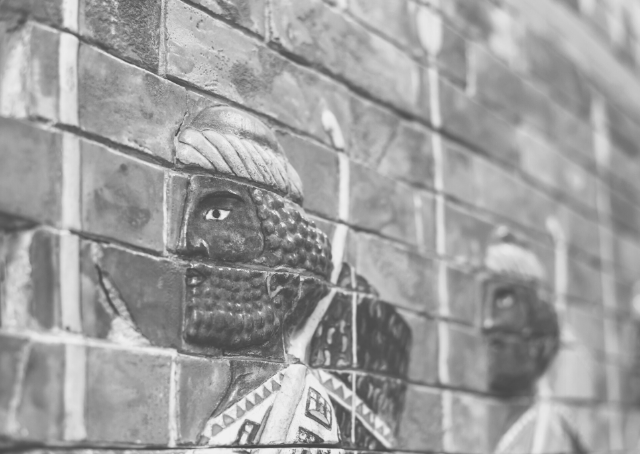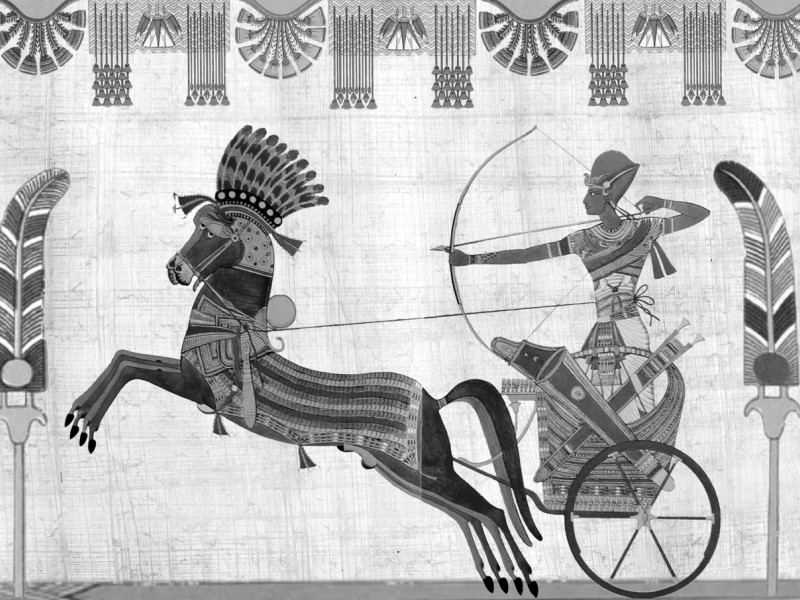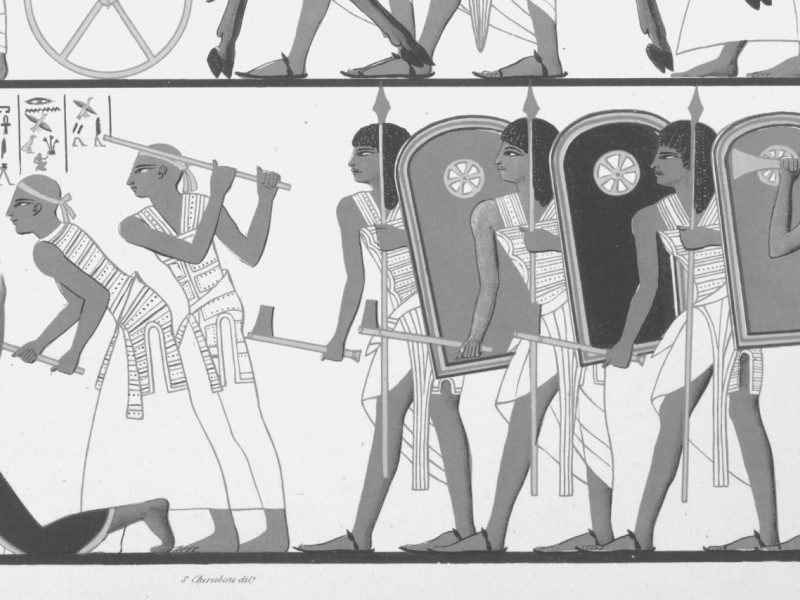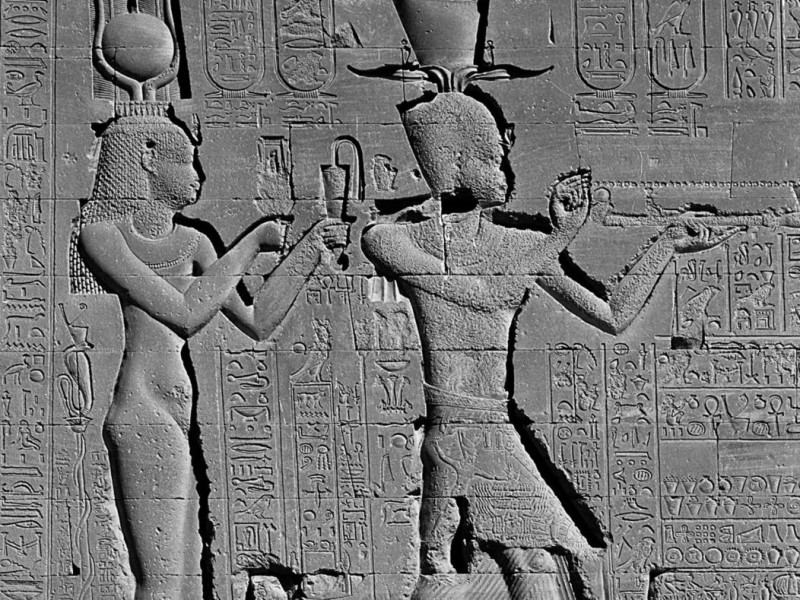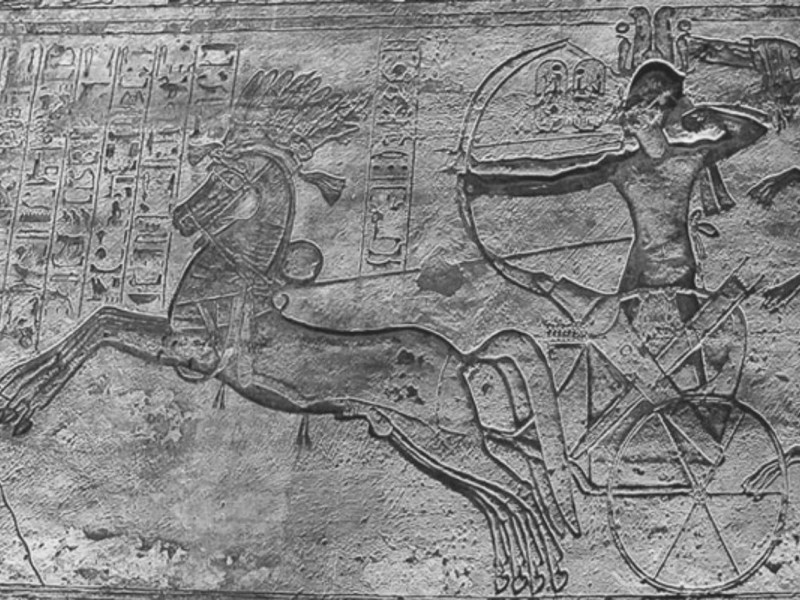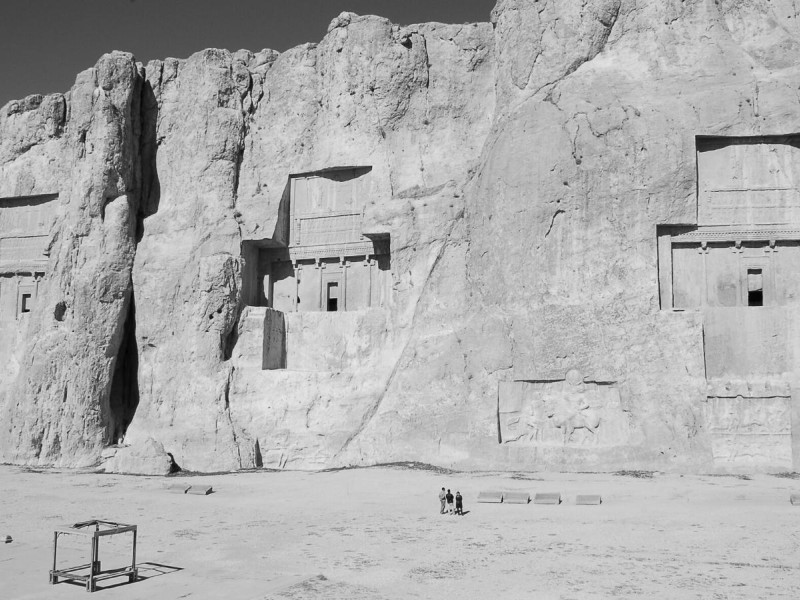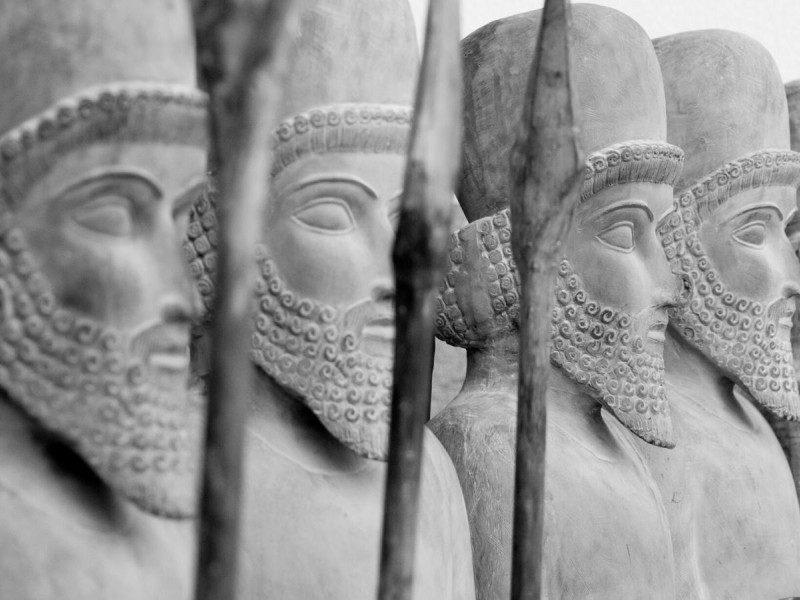Battle of Pelusium: How Persia Defeated Ancient Egypt
Two foremost powers of the ancient Near East, Egypt, and Persia clashed in the Battle of Pelusium, which decided the future of Ancient Egypt.
For thousands of years, Pharaonic Egypt had been the foremost power of the ancient world. Its culture spread from Nubia to Anatolia, and the Pharaoh’s armies kept Egypt’s long borders secure. With the decline of the New Kingdom, Egypt entered into a long era of decline.
The rise of the Achaemenid Empire under Cyrus the Great forever changed the balance of power in the region, as Persia challenged Egypt for hegemony.
Background: The Long Decline of Egypt
Ancient Egypt had reached the peak of its power and prestige during the 18th and 19th Dynasties of the New Kingdom (c. 1550 – 1077 BCE). During the reign of Ramasses II, Egypt had come into conflict with the Hittite Empire centered on Anatolia, which had culminated with the Battle of Kadesh (1274 BCE) that ended inconclusively.
Following the decline and eventual collapse of the Hittite Empire, Egypt would not face a serious rival until the rise of the Assyrian Empire in Upper Mesopotamia.
Raids of the mysterious Sea Peoples, the growing power of the priesthood of Amon, and economic decline all contributed to the slow but steady decline of Egypt as a great power.
Neo-Assyrian Empire Conquers Egypt
Following a series of conflicts with the Assyrians during the reign of the 25th Dynasty (747 – 656 BCE), Egypt had permanently lost a foothold in the Near East. As a result, Egypt fell to foreign invaders and was absorbed into the Neo-Assyrian Empire.
The Assyrian rule had been relatively short, however. Egypt regained its independence, but its rulers found themselves unable to arrest the decline of Egyptian military power, despite the fact Egypt remained a prosperous country and enjoyed an era of cultural revival.
Amasis Attempts To Restore Egypt’s Former Glory
Under the 26th Dynasty (664 – 625 BCE), Egypt had made a modest recovery.
The Fall of the Assyrian Empire and the subsequent rise of the Neo-Babylonian Empire freed Egypt from a dangerous adversary. The Babylonian rule in Mesopotamia would prove to be short-lived.
Under Cyrus the Great, the Achaemenid Empire would unite the whole of the ancient Near East under its scepter.
Egypt Under the 26th Dynasty
The Pharaohs Psamtik I and Necho II had succeeded in restoring Egypt’s independence after driving out the Nubians. Necho II allied with the rapidly disintegrating Assyrian Empire in order to counter the growing power of the Neo-Babylonian Empire but suffered a defeat in the Battle of Carchemish. His heir Psamtic II successfully campaigned against the Cushites and launched an expedition into Palestine.
More importantly, he set about restoring the old monuments and building new temples. Psamtic’s successor Apries was less successful and was eventually overthrown by Amasis, an army general who became the next Pharaoh.
The Pharaoh Consolidates His Position and Allies With the Greeks
According to Herodotus, during the reign of Amasis, Egypt and Greece came into closer contact. Amasis permitted Greeks to settle in Egypt and designated the city of Naucratis in the Nile Delta as their residence.
During his reign, the Pharaoh would attempt to make use of the Greek mercenaries against Egypt’s arch-enemy Persia. Herodotus further states that under Amasis, Egypt reached unprecedented levels of prosperity and states how the number of inhabited cities was over twenty thousand. Amasis had defeated a Babylonian incursion into Egypt, which increased the Pharaoh’s confidence in his power.
Despite Egypt’s wealth, Amasis lacked the power to counter the growing might of Persia under Cyrus. Isolated and with no allies, Egypt faced the grim prospect of a Persian invasion.
Cambyses II Decides To Invade
Persia’s last remaining adversary was Egypt. If we’re to believe Herodotus’ account, Amasis soon gave Cambyses II the perfect pretext to invade. Herodotus goes on to describe how Cambyses II asked the hand of the Pharaoh’s daughter, which Amasis suspected would only serve as the King’s concubine.
The Pharaoh made up his mind when he saw the beautiful daughter of his predecessor, whose name was Nitetis, and handed her over to Cambyses as if she were his own daughter. When the Persian King embraced her and called her by her father’s name Nitetis declared he had been tricked by Amasis, whom she called a rebel and the murderer of her father.
Cambyses saw it as a sufficient pretext to invade and mobilized his troops for war.
The Persian Conquest of Egypt Begins
By this time, Egypt’s military weakness had become apparent to its enemies. The Persian army’s superior weapons and tactics gave them a clear advantage over the Egyptians, who had been conquered by Assyria a century before and proved unable to defeat the Babylonians. For the Persians, Egypt seemed an easy conquest.
Psamtik III Faces the Impending Persian Attack
To make things worse for the Egyptians, Amasis died shortly before the Persian invasion of Egypt, leaving the throne to his young and inexperienced son Psamtik III. Despite his young age, the new Pharaoh did his best to prepare the country for the Persian invasion.
Cambyses was swift to mobilize and move against his enemy. Having obtained the friendship of Arabian tribes that inhabited the desert regions of what is today the Sinai Peninsula and Southern Israel, the Persian monarch crossed the desert and pitched his camp close to the Egyptians.
Ancient Egypt Faces Its Darkest Moment
Egypt’s young ruler fortified his position at Pelusium, at the Pelusiac branch of the Nile in the easternmost extremity of Egypt. The now extinct branch of the Nile served as the last barrier between the Persian invaders and Egypt.
Psamtik had fortified the capital, Memphis, fearing the worst. Herodotus tells of the strange event in Thebes, the former capital of Egypt, immediately after Psamtik succeeded his father on the throne. The Greek historian claims rain fell at Thebes, which usually receives no precipitation. Such an event must have been considered as an ill-omen by the Egyptians.
Herodotus provides no specific details about the course of the battle but maintains that the Egyptians were quick to break ranks and flee in disorder to Memphis. Other ancient sources provide a radically different account of how the Persian ruler defeated the Egyptians at Pelusium.
Cambyses Uses a Secret Weapon Against the Egyptians
In war, deception plays a key role. Military commanders throughout history have used deception to gain a crucial advantage over their enemies and gain the element of surprise.
The cunning Persian ruler was said to have possessed excellent knowledge of Egyptian culture. Polyaenus, an ancient author writing in the II century CE, during the reign of Roman Emperor Marcus Aurelius, provides a fascinating account of the battle.
Contrary to Herodotus, Polyaenus claims the Egyptians successfully resisted the Persian onslaught, prompting Cambyses to change his tactics. The cunning Persian utilized his knowledge of Egyptian religion and released hundreds of cats, dogs, sheep, and ibises before his own troops, knowing the Egyptians would not dare harm animals they considered sacred.
The stunned Egyptians fled the battlefield. They preferred defeat in the battle to offending their gods.
Cats in Ancient Egyptian Religion
Cats were indeed regarded as sacred animals in Ancient Egypt. They were not only popular as pets but also closely associated with the goddess Bastet depicted as having the body of a woman and the head of a cat. Bast had been a very popular deity among Egyptians. Her cult gained prominence already during the Old Kingdom era.
The respect the Egyptians showed to Bastet was extended to all cats, which could not be harmed in any way. To harm a cat would mean to insult the goddess. Thousands of mummified remains of cats had been discovered in tombs across Egypt.
Animals such as dogs, ibises, and bulls were considered sacred as well. They also played a notable role in Egyptian religion. Dogs were linked to the god Anubis, while ibises were associated with Thoth, the god of wisdom and writing.
Did Cats Doom Egypt to Centuries of Foreign Rule?
In his work Stratagems, Polyaenus states Cambyses went a step further and painted the image of the goddess Bastet on the shields of his soldiers. The Egyptians choose to flee instead of risking harming the sacred animals, fled back to Memphis in disorder.
Pelusium quickly fell, and the victorious Persians soon besieged Memphis. If Polyaenus’ account is to be believed, the Battle of Pelusium would be the first instance of cats used in war and the earliest known example of psychological warfare.
The Egyptians Suffer a Crushing Defeat
Persian victory over Psamtik III at Pelusium marked the beginning of Persian rule over Egypt. The Egyptians took heavy losses, whereas Persian casualties were light. Memphis soon fell to Cambyses, who then marched to Sais, where he ordered the body of Amasis exhumed and burned as revenge for the insult at the hands of the deceased Pharaoh.
Greek sources claim Cambyses treated the defeated Egyptians harshly. Polyaenus claims the Persian ruler hurled cats at the Egyptians in contempt of their willingness to surrender their country’s independence out of fear of harming animals.
Psamtik himself was taken captive along with his sons and daughters and many of his friends put to death. According to some sources, the defeated ruler was treated well until he tried to organize a rebellion against the Persians and committed suicide.
Egypt Becomes a Satrapy of the Persian Empire
In consequence of the defeat at Pelusium, the struggle between Persia and Egypt had been decided in favor of the former. Egypt had become a satrapy of the Persian Empire, and the 27th Dynasty was founded, with Persian monarchs acknowledged as Pharaohs.
Cambyses had rebuilt Memphis after the devastation the city suffered during the short war and generally respected Egyptian traditions. Cambyses had remained in Egypt until he deemed the new satrapy sufficiently pacified, but his heirs on the throne would experience trouble in ruling this distant land.
Short-lived Independence and Persian Reconquest
Persian rule over Egypt remained tenuous right from the onset. Local nobles and generals attempted to throw off foreign power with the aid of Greek mercenaries and Nubians. But, they were unsuccessful until Amyrtaeus drove out the Persians from Memphis in 404 BCE.
Egypt would remain independent for the next sixty years, as the Persians found themselves unable to reconquer the country due to internal disputes. Artaxerxes (358 – 338 BCE) failed to recover Egypt in 351 BCE, having suffered a major defeat against the Egyptians under Nectanebo II. He launched another campaign eight years later, and Egypt finally fell to the Persian King. Never again would the Egyptians be ruled by a native Pharaoh.
Cats as a War Weapon: Truth or Myth?
Polyaenus remains the only source for the claim that Cambyses used cats to defeat the Egyptians at Pelusium. It might have been an attempt to portray the Egyptians as a people faithful to their beliefs and traditions to the point of sacrificing their liberty rather than risk insulting the gods, which made Egypt great.
If true, it would attest to the greatness of Ancient Egyptian civilization and explain why it had lasted for over three millennia.
Conclusion
The Battle of Pelusium represented the final climactic clash between the Achaemenid Empire and Pharaonic Egypt. Although still a rich country, Egypt lacked the military strength to resist the Persian attack.
Several reasons contributed to Egypt’s defeat:
The Persians had superior weapons and tactics.
Psamtik III lacked experience as a general.
The Persians may have used the battle of Pelusium cats to wage psychological warfare.
Cambyses II had been familiar with Egyptian culture and military tactics.
Persian victory at Pelusium was a watershed moment in the history of the ancient world. It marked the end of Egypt as an independent country and established Persian hegemony over much of the ancient Near East.
